Pear variety Williams (Summer Duchess)
Williams is an old English pear with late summer ripening. Bred in about 1796 by Wheeler in Berkshire (South England) on the basis of the Common Pear species. In the future, Richard Williams was actively involved in distribution, who made the new variety famous and gave it his name; he first introduced this pear to the London Fruit and Horticultural Organization. However, the exact progenitors of the variety have not been determined, so Williams is ranked as seedlings of unknown origin. Since 1828, this pear began to be actively cultivated in France, and then in all other European countries. It was brought to Crimea in the 1860s, after which it began to spread rapidly throughout all fruit regions in southern Russia. In terms of prevalence in Crimea, Williams ranks third (after Bere Bosk and Bere Ardanpon). Its popularity all over the world not only does not fall, but continues to grow. Pear Williams is rightfully recognized as a classic variety of world importance and a standard for all existing summer pear varieties. It is one of the best dessert varieties, perfect for both home and amateur gardening, and for growing on an industrial scale. Other names for this variety are known: Williams summer, Duchess summer, Williams Bon Chretien, Bartlett, in North America.
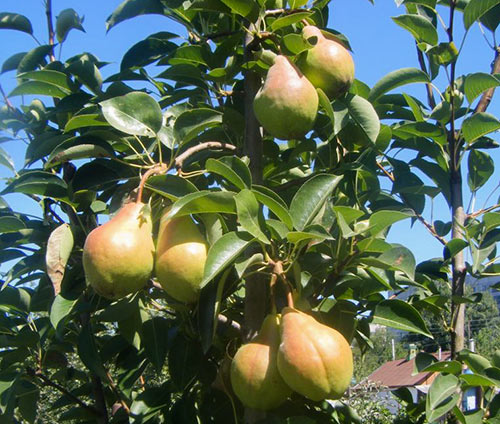
Since 1947, the variety has been on the State test. In the same year, Williams was zoned in the North Caucasus region (Krasnodar Territory and the Republics: Dagestan, Adygea, North Ossetia, Kabardino-Balkarian, Karachay-Cherkess, Ingush, Chechen). It is also widespread in the Stavropol Territory, Rostov and Kaliningrad regions, in Azerbaijan, Georgia, Moldova, Latvia, Kyrgyzstan, Uzbekistan, Tajikistan, Turkmenistan, Ukraine.
Trees are classified as weak or medium-sized; the crown is broad-leaved, often asymmetrical, broad-pyramidal or round-pyramidal in shape. Young trees grow fast enough, but already in 10 - 12-year-old trees the growth rate slows down significantly. Such a depressing effect on growth is exerted by the early onset of fruiting and abundant harvests, in the same connection, the summer Duchess pear trees do not usually reach large sizes. The bark on the trunk and main skeletal branches with a smooth surface, is colored gray.
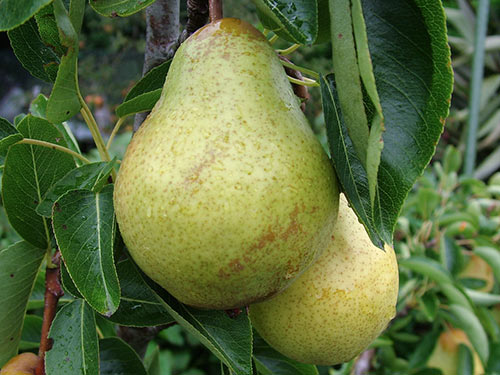
Shoots of medium size, rather thick, slightly arched or straight, light yellow in color; lentils are few in number. The leaves are large in size, ovoid, with short-pointed tips and small-crested edges. The lamina has a smooth, glossy surface and is slightly folded in a boat-like shape. The lateral veins are protruding, with a light color characteristic of this variety. Leaf buds are short in length, pointed in shape, sitting on swollen pads and slightly detaching from the shoot.
Each inflorescence usually contains 6-7 medium-sized flowers. The flowers are dull white. Flowering begins late and lasts a fairly long period. Despite the late flowering, flowers are formed, as a rule, before the leaves. It was also noted that the flowers are not sensitive to adverse weather conditions.
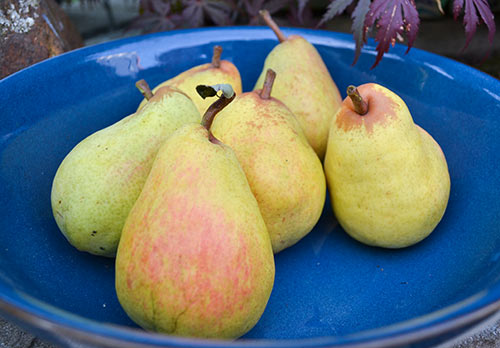
By size, Williams pear fruits are medium and large, the weight of one fruit averages 170 g and does not fall below 150 g, the largest pears grow on young trees - up to 180-200 g. The shape of the fruits is oblong-pear-shaped, the surface is slightly bumpy. The skin is thin, with a glossy sheen, incredibly fragrant. When removed, the main color of the fruit is light green, when fully ripe it becomes waxy yellow, small gray dots appear. The cover color appears on the sunny barrel in the form of a faint pink-red blush. Rarely, small specks of rusty color may appear on the fruits, diverging towards the poles.Peduncles are of medium length, thick, slightly curved, often oblique, sometimes with a bell at the upper end. The funnel is small, narrow in shape, with an influx at the base of the peduncle. The saucer is small, narrow, or absent altogether. Small cup, open or semi-open type. The heart is poorly outlined, small in size, elliptical in shape. The seed chambers are medium in size, sharpened to the base of the fruit, elongated-oval; the axial cavity is hollow. Seeds are small, pointed, ovoid, dark brown in color.

The pulp is yellowish-white, oily, juicy, tender, melting, wine-sweet, with a pleasant sourness and delicate nutmeg aroma, excellent dessert taste. By chemical composition, Williams fruits contain: dry soluble substances (13.8%), the amount of sugars (8.3%), titratable acids (0.42%), ascorbic acid (5.4 mg / 100 g), P- active catechins (42.6 mg / 100 g fr wt). The tasting taste score is 4.8 points (on a 5-point scale). Duchess summer refers to the varieties of universal use. The fruits are often used for drying and preservation (compotes), the resulting products are always of high quality. Dried pears are characterized by a beautiful creamy yellow color, good pulp consistency and good taste.
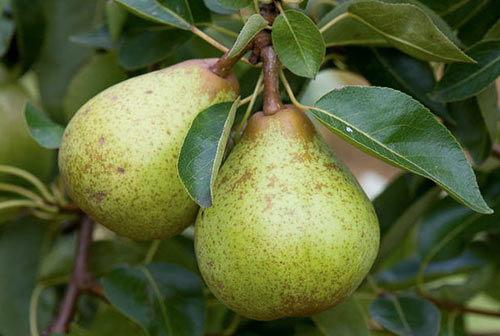
On trees, the fruits are rarely tied one at a time and usually form ovaries of 2 - 3 pieces, are firmly held on the branches and firmly attached to the stalks. The period of removable maturity falls on the second decade of August. Pears removed a little earlier (until the moment when the skin begins to turn yellow) are stored for about 15 days and withstand transportation well at this time. In a refrigerator, the total storage period reaches 1.5 months (45 days).
Pear Williams is ranked among the self-fertile varieties. The best pollinators include varieties: Forest beauty, Clapp's Favorite, Olivier de Serre, Pass Crassan, Bere Bosc, Bere Ardanpon, Alexandrovka. Summer duchess is good at quince and pear. In general, it is not very soil-demanding, but it still grows better on fertile rich soils, well supplied with water: it is extremely important to observe these conditions for dwarf plantations, otherwise the trees will be threatened by rapid depletion and early death.
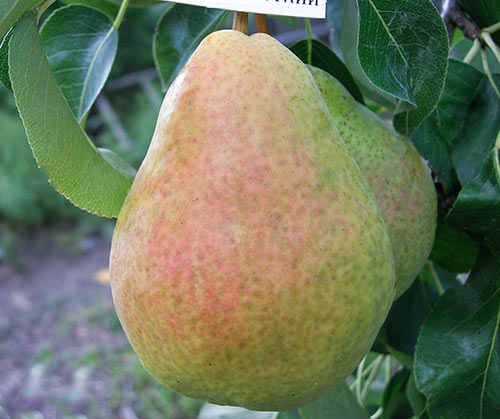
This variety is characterized by an early onset of fruiting: trees grafted on a pear bear fruit at 5 - 6 years; grafted on quince - already for 3-4 years (although they are short-lived). The yield is high. According to the Crimean Fruit and Berry Station, a tree at the age of 10 yields about 35 kg of fruit, and at the age of 18 - 20 years - 150 kg or more. In general, the level of yield is largely determined by the growing conditions. So, in Moldova, the average yield reaches 230 - 250 kg per tree. In the conditions of the Kuban (in the central part), the yield of 12 - 17-year-old trees averages 100 - 120 c / ha; in mountain conditions - 200 c / ha. The yield of the variety in Ukraine is as follows: in the conditions of the Chernivtsi region, trees at the age of 28 years bring an average of 93 kg of fruits / village, in the conditions of the Central Steppe, 69 kg are harvested from 19-year-old trees.
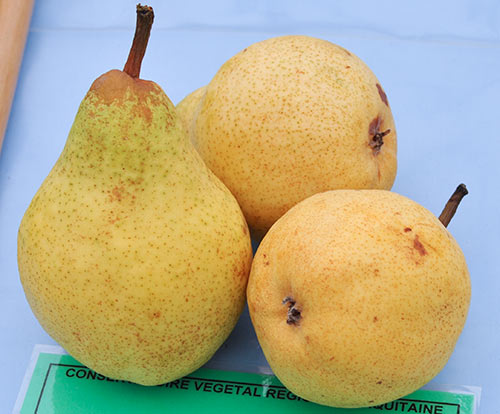
Indicators of winter hardiness and drought resistance of Duchess summer are low, especially for young trees. Also, its trees are very susceptible to air drought, so it is highly advisable to choose places with protection from the winds for planting them. Resistance to scab is average, to aphids and honeydew - weak.
The main advantages of Williams pear include: early maturity, regular high yield, attractive large fruits with a dessert taste.
Among the significant disadvantages are: a low level of winter hardiness and drought resistance of trees, self-infertility and poor resistance to some diseases.
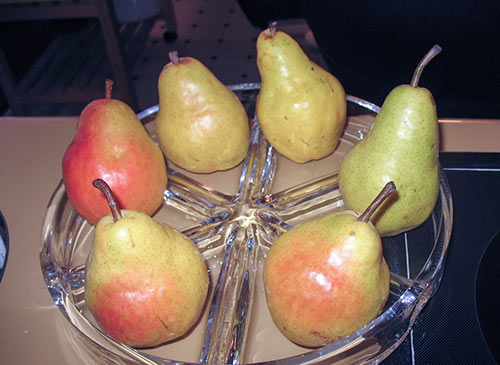
The variety is of great value for breeding work.
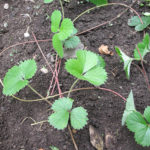
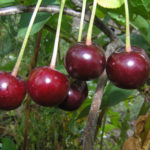
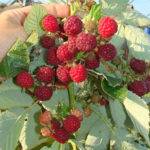
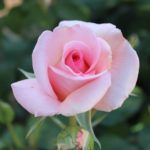
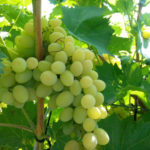
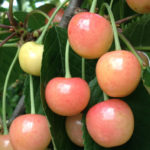



We have two trees of this variety growing for the 6th year. Low, spreading trees. The harvests are simply amazing. All branches are simply stuck with fruits, props were made for each branch, otherwise they would not have survived. Such an abundance of fruits delights not only us, but also our neighbors and everyone who comes to visit. Very tasty pear, juicy, sweet. Very pleased.